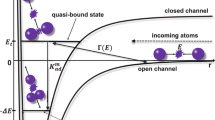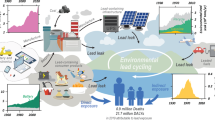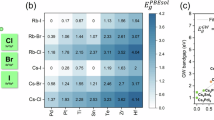Abstract
RECENT investigations of the hot atom chemistry of lead-212 recoiling from α-decay of polonium-216 have shown that energetic lead atoms can react with gases such as methane to form volatile compounds1. In the recoil reactions, the lead species originate with high kinetic energy and are afterwards degraded by collisions, eventually reacting to form stable compounds.
This is a preview of subscription content, access via your institution
Access options
Subscribe to this journal
Receive 51 print issues and online access
$199.00 per year
only $3.90 per issue
Buy this article
- Purchase on SpringerLink
- Instant access to full article PDF
Prices may be subject to local taxes which are calculated during checkout
Similar content being viewed by others
References
Kay, J. G., and Rowland, F. S., J. Amer. Chem. Soc., 80, 3165 (1958); paper No. 95, Div. Phys. Chem., 139th Meeting Amer. Chem. Soc., St. Louis, Missouri, March 1961.
Nelson, L. S., and Lundberg, J. L., J. Phys. Chem., 63, 433 (1959).
Nelson, L. S., and Kuebler, N. A., J. Chem. Phys., 33, 610 (1960).
Nat. Bur. Stand. Circ. 467 , 3, edit. by Moore, Charlotte, was the source for all atomic energy-levels and ionization energies referred to in this work.
Pearse, R. W. B., and Gaydon, A. G., The Identification of Molecular Spectra (Chapman and Hall, Ltd., London, 1950).
Rochester, G. D., Proc. Roy. Soc., A, 153, 407 (1936); A, 167, 567 (1938).
Author information
Authors and Affiliations
Rights and permissions
About this article
Cite this article
KAY, J., KUEBLES, N. & NELSON, L. Vacuum Ultra-Violet Absorption Spectra of Flash-heated Lead reacting with Various Gases. Nature 194, 671 (1962). https://doi.org/10.1038/194671a0
Issue date:
DOI: https://doi.org/10.1038/194671a0



